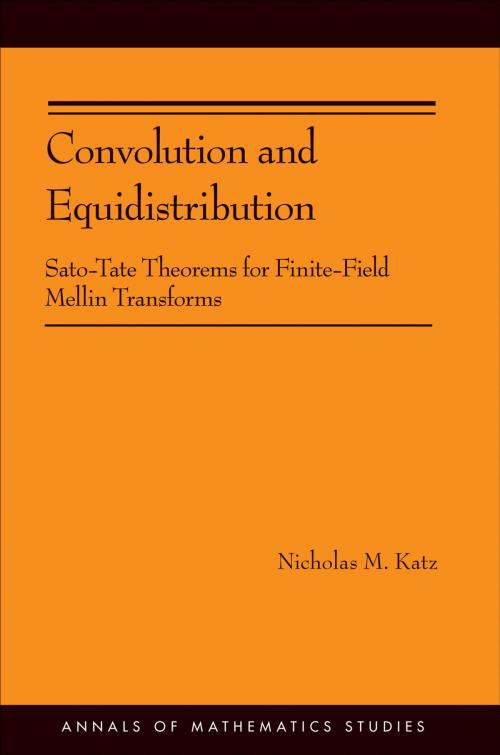Convolution and Equidistribution
Sato-Tate Theorems for Finite-Field Mellin Transforms (AM-180)
Nonfiction, Science & Nature, Mathematics, Number Theory, Statistics| Author: | Nicholas M. Katz | ISBN: | 9781400842704 |
| Publisher: | Princeton University Press | Publication: | January 24, 2012 |
| Imprint: | Princeton University Press | Language: | English |
| Author: | Nicholas M. Katz |
| ISBN: | 9781400842704 |
| Publisher: | Princeton University Press |
| Publication: | January 24, 2012 |
| Imprint: | Princeton University Press |
| Language: | English |
Convolution and Equidistribution explores an important aspect of number theory--the theory of exponential sums over finite fields and their Mellin transforms--from a new, categorical point of view. The book presents fundamentally important results and a plethora of examples, opening up new directions in the subject.
The finite-field Mellin transform (of a function on the multiplicative group of a finite field) is defined by summing that function against variable multiplicative characters. The basic question considered in the book is how the values of the Mellin transform are distributed (in a probabilistic sense), in cases where the input function is suitably algebro-geometric. This question is answered by the book's main theorem, using a mixture of geometric, categorical, and group-theoretic methods.
By providing a new framework for studying Mellin transforms over finite fields, this book opens up a new way for researchers to further explore the subject.
Convolution and Equidistribution explores an important aspect of number theory--the theory of exponential sums over finite fields and their Mellin transforms--from a new, categorical point of view. The book presents fundamentally important results and a plethora of examples, opening up new directions in the subject.
The finite-field Mellin transform (of a function on the multiplicative group of a finite field) is defined by summing that function against variable multiplicative characters. The basic question considered in the book is how the values of the Mellin transform are distributed (in a probabilistic sense), in cases where the input function is suitably algebro-geometric. This question is answered by the book's main theorem, using a mixture of geometric, categorical, and group-theoretic methods.
By providing a new framework for studying Mellin transforms over finite fields, this book opens up a new way for researchers to further explore the subject.















